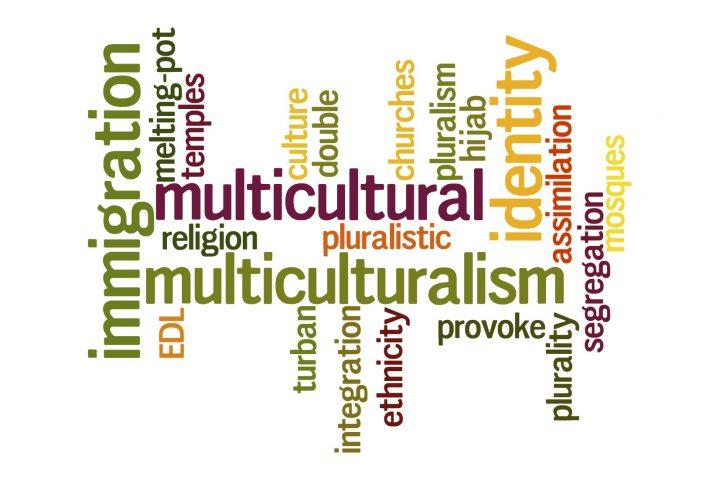As classrooms across the nation grow increasingly diverse, schools are placing greater emphasis on multicultural education to prepare students for a globalized world. This approach aims to foster respect, understanding, and inclusivity by integrating diverse cultural perspectives into the curriculum. Yet, despite these efforts, educators report challenges and limitations in how multicultural education is implemented. This article examines the current state of multicultural education in schools, exploring both the methodologies used to teach it and the areas where educators believe the system falls short.
Challenges in Implementing Multicultural Curricula in Diverse Classroom Settings
Educators often face significant obstacles when attempting to infuse multicultural content into their classrooms. One major challenge is the lack of comprehensive training and resources tailored to diverse cultural perspectives. Many teachers report feeling unprepared to address the complexities of cultural sensitivity, which can lead to superficial or inaccurate representations of different groups. Additionally, standardized testing and rigid curriculum guidelines frequently prioritize core subjects in ways that marginalize multicultural themes, causing them to be relegated to an afterthought rather than an integral part of learning.
Beyond institutional barriers, teachers also encounter real-world classroom dynamics that complicate these efforts. Educators must navigate varied levels of student receptiveness while balancing cultural tensions that sometimes emerge among peer groups. The balancing act is further complicated by the risk of unintentionally reinforcing stereotypes or provoking backlash from parents and local communities. Key factors contributing to these hurdles include:
- Insufficient professional development on multicultural pedagogy
- Curriculum constraints imposed by standardized state requirements
- Community resistance to discussions of race, ethnicity, and identity
- Limited classroom time to meaningfully explore diverse perspectives
| Challenge | Impact on Teaching | Suggested Solution |
|---|---|---|
| Lack of Resources | Minimal authentic cultural materials | Developing partnerships with cultural organizations |
| Standardized Testing | Restricted instructional flexibility | Advocating for inclusive assessment methods |
| Community Opposition | Teacher censorship or avoidance | Engaging families through dialogue and education |
Educators’ Perspectives on Gaps in Cultural Representation and Inclusivity
Many educators acknowledge the progress schools have made in incorporating multicultural content into curricula but emphasize significant concerns regarding depth and authenticity. According to interviews, there is a prevailing sense that diversity is often reduced to surface-level inclusion‚ÄĒsuch as holiday celebrations or tokenistic mentions‚ÄĒrather than a rigorous exploration of cultures, histories, and global perspectives. Teachers frequently point out that existing textbooks and resources tend to marginalize non-Western voices or frame minority experiences through a predominantly Eurocentric lens, which can perpetuate stereotypes instead of dismantling them.
Educators also highlight systemic barriers to truly inclusive education:
- Limited professional development: Many teachers report insufficient training to confidently navigate complex cultural topics.
- Curriculum constraints: Standardized testing and mandated content leave little room for expansive, critical discussions.
- Resource disparities: Schools in underserved communities often lack diverse literary and digital materials.
| Challenge | Impact on Multicultural Education |
|---|---|
| Standardized Testing Pressure | Reduces time for cultural learning beyond basic requirements |
| Inadequate Training | Limits educators’ confidence in addressing difficult topics |
| Resource Gaps | Creates uneven access to diverse narratives |
These factors contribute to a gap between the ideal of multicultural education and the reality experienced by many students and teachers. As one educator remarked, ‚ÄúWe want to prepare students for a diverse world, but our system often confines us to narrow definitions of diversity that fail to challenge biases or foster genuine understanding.‚ÄĚ The call for more inclusive frameworks, better resources, and systemic support remains urgent among education professionals.
Effective Strategies for Integrating Multicultural Education Across Subjects
Educators emphasize the importance of weaving multicultural perspectives into a variety of subjects to foster inclusivity and cultural awareness. Successful approaches often include collaborative lesson planning that invites input from diverse community members and students themselves, ensuring curricula reflect multiple worldviews. Teachers incorporate diverse literature in language arts, examine global histories beyond Eurocentric narratives in social studies, and explore cultural contributions in STEM fields. This multidisciplinary infusion promotes critical thinking and empathy by allowing students to engage with content that resonates with varied experiences and backgrounds.
Effective strategies also leverage ongoing professional development, equipping teachers with the tools to navigate cultural sensitivities and adapt pedagogy accordingly. Schools that prioritize these efforts frequently adopt:
- Culturally responsive teaching frameworks that recognize students’ cultural references
- Project-based learning that connects academic concepts to real-world multicultural contexts
- Equity-focused assessments to measure understanding without cultural bias
Such integration not only enriches student engagement but also challenges systemic gaps in education. The following table illustrates a snapshot of subject areas and examples of multicultural integration:
| Subject | Multicultural Integration Example |
|---|---|
| Language Arts | Studying global folktales and authors from diverse backgrounds |
| Social Studies | Including histories from Indigenous and non-Western perspectives |
| Science | Highlighting scientific innovations from various cultures |
| Mathematics | Exploring mathematical concepts developed across different civilizations |
Policy Recommendations to Strengthen Multicultural Education in Schools
To address the gaps in multicultural education, policymakers should prioritize comprehensive teacher training that goes beyond surface-level cultural awareness. This includes cultivating educators’ abilities to facilitate critical conversations about race, identity, and power dynamics in the classroom. Schools must also adopt curricula that authentically represent diverse histories and perspectives, moving away from tokenistic or stereotypical portrayals. By embedding multicultural principles across subjects rather than isolating them in specific lessons, educational institutions can foster a more inclusive environment where all students see their experiences valued and reflected.
Additionally, increased funding and resource allocation are essential to support these initiatives effectively. Schools can benefit from partnerships with community organizations and cultural experts to enrich learning experiences and provide students with real-world connections to multicultural concepts. Below is a quick overview of key policy actions that experts advocate for:
- Mandatory, ongoing professional development focused on equity and inclusion.
- Curriculum audits to identify biases and gaps in educational materials.
- Empowerment of student voices through platforms addressing cultural diversity and social justice.
- Investment in multilingual resources to support students from varied linguistic backgrounds.
Final Thoughts
As schools nationwide continue to diversify, multicultural education remains a critical component of preparing students for an increasingly interconnected world. While educators employ a range of strategies‚ÄĒfrom integrating diverse perspectives into curricula to fostering inclusive classroom environments‚ÄĒmany acknowledge that significant gaps persist. Challenges such as insufficient training, limited resources, and uneven implementation hinder the full realization of multicultural education‚Äôs potential. Addressing these shortcomings will require sustained commitment from policymakers, school leaders, and communities alike to ensure that all students receive an education that reflects and respects the diversity of their society.







